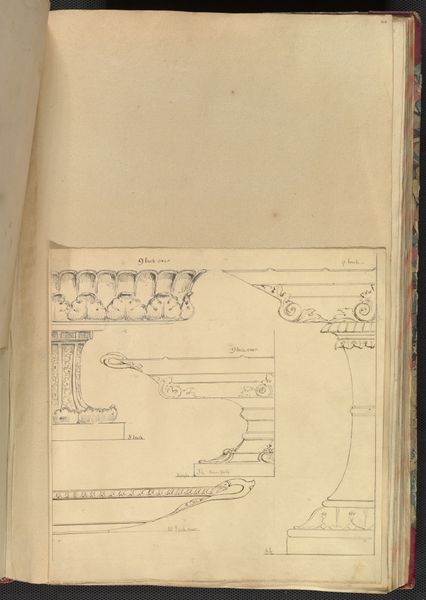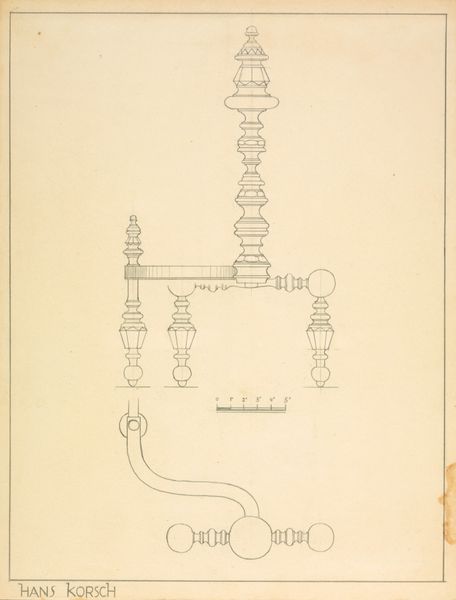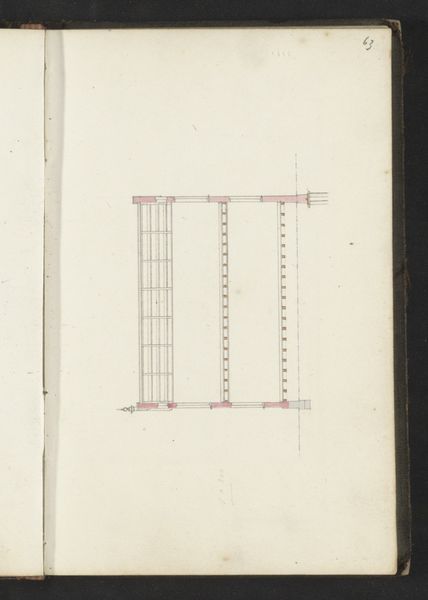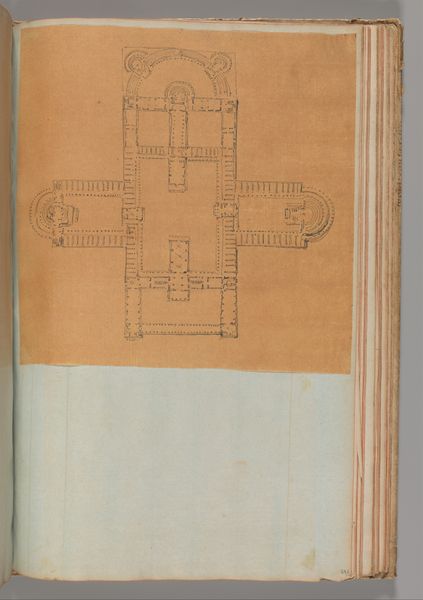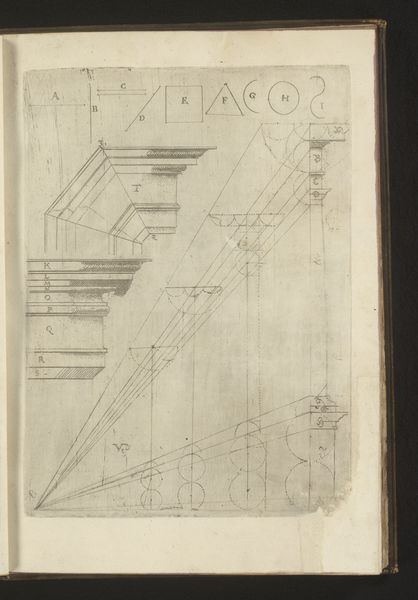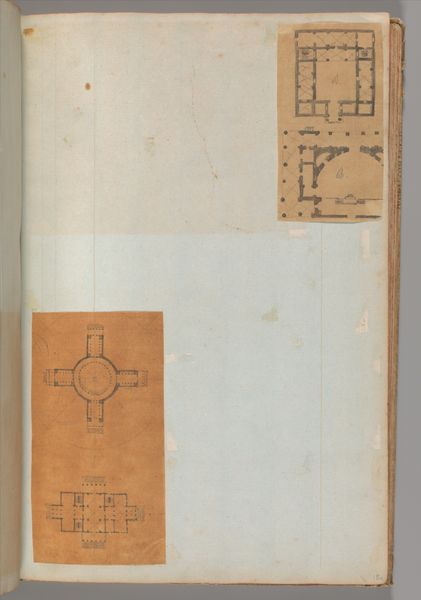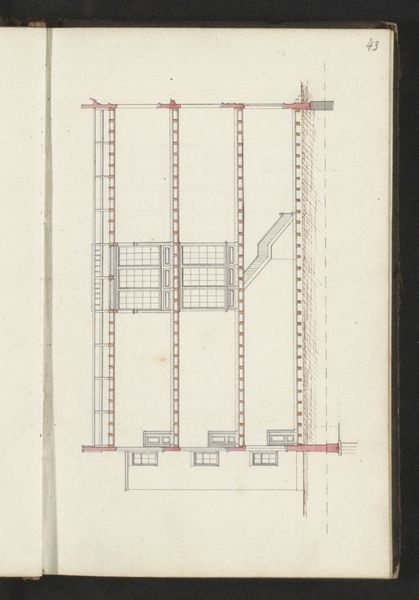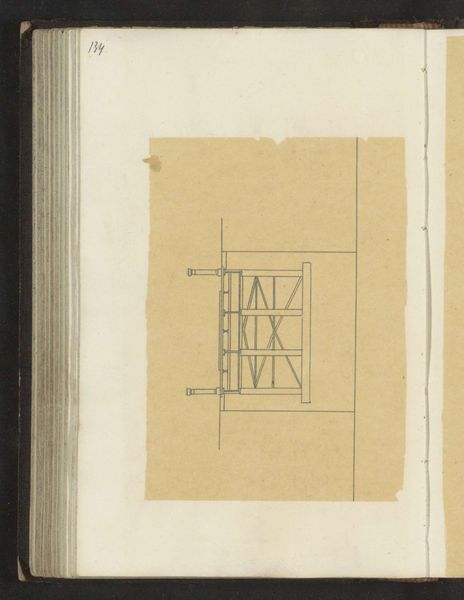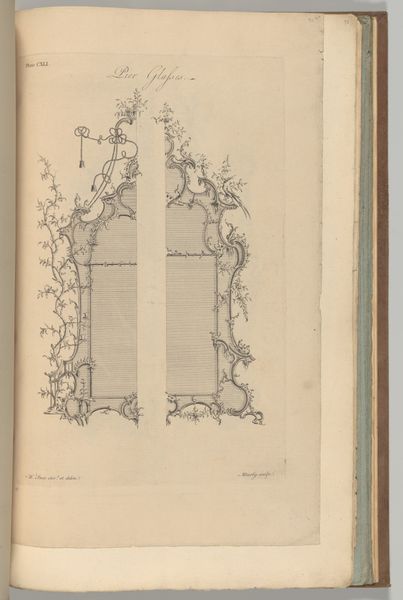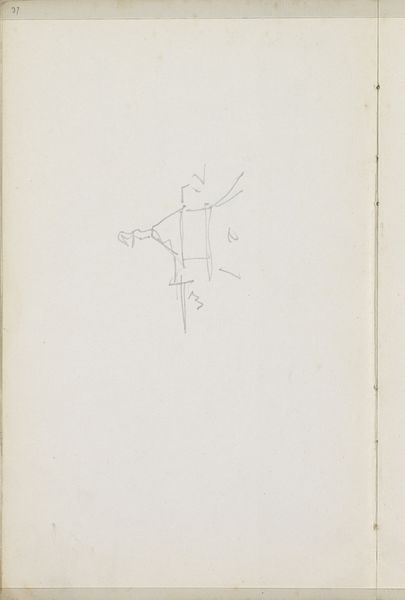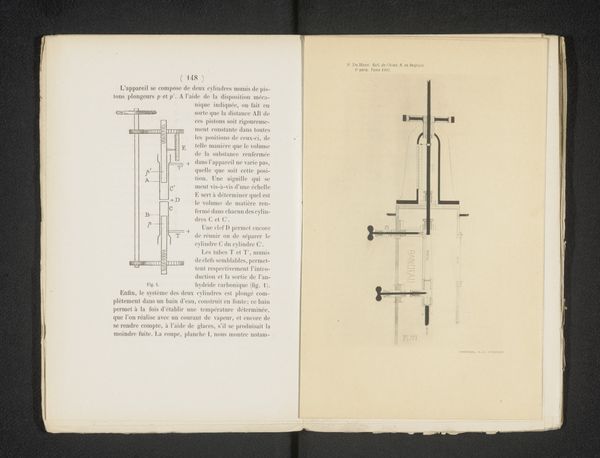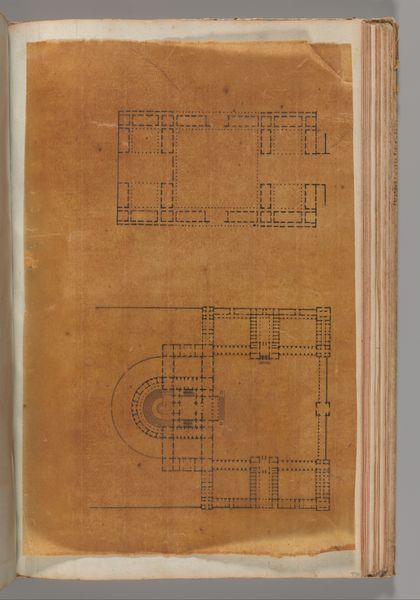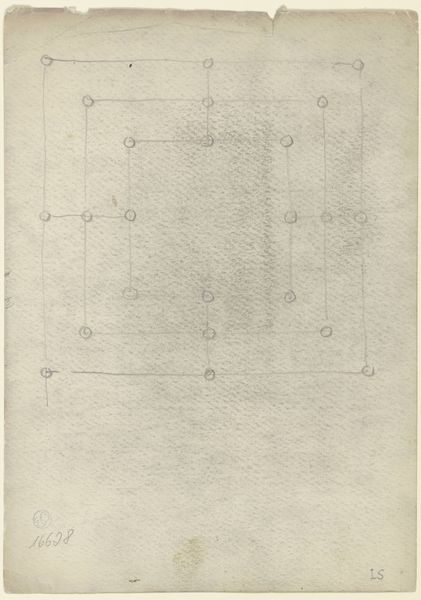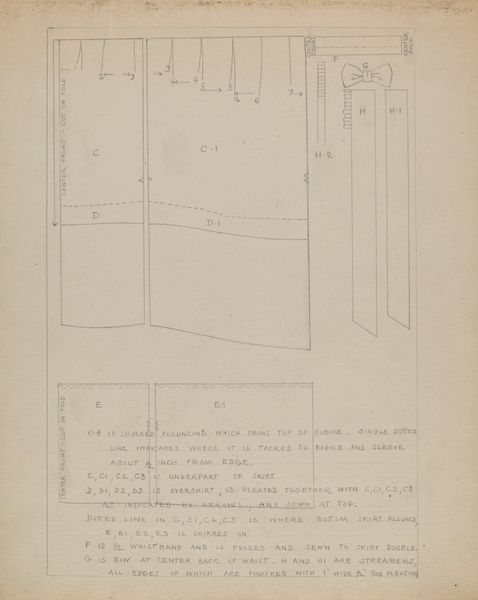
drawing, print, etching
#
drawing
# print
#
etching
#
book
#
perspective
#
11_renaissance
#
geometric
#
france
#
line
Dimensions: 16 1/8 × 11 1/2 × 13/16 in. (41 × 29.2 × 2 cm)
Copyright: Public Domain
Curator: Immediately, the lines suggest a kind of precarious elegance. Like a staircase to nowhere, a conceptual blueprint. What are your initial thoughts? Editor: Seems so precisely… calculated. The lack of organic forms feels unsettling. It's as if human experience has been entirely removed, boiled down to mere angles and measurements. This gives me the feeling that it doesn't belong in the natural world at all. Curator: That feeling of otherness is potent, indeed. We are looking at a print titled *Livre de Perspective de Jehan Cousin*, created around 1560 by Jean Cousin the Elder, held here in the Met’s collection. This etching offers more than just lines; it's a complete demonstration on how to achieve linear perspective. Editor: Ah, so a teaching aid, then. Still, look at that deconstructed staircase! I think it gives you insight into Renaissance obsession with structure. Each tread numbered. So rigid, each block a step in the logical method of visual construction. Curator: Yes. Cousin deconstructs the geometric forms with text in the cut: “Poinct Principal”, “Perpesctif Terre”, it is the language, the semiotics here that become central. We learn as we observe this perspective made tangible. Editor: True, but look, those shapes forming the steps of that very strange staircase: each seems subtly skewed, off from being perfectly even. Makes the rational scheme of the whole thing seem unstable somehow… vulnerable. Curator: The imperfection, perhaps, acknowledging the human element within these mechanical reproductions? In any event, the piece also offers us an artifact, itself, bound in paper with texture and form. Editor: Ultimately, Cousin's geometric ladder leaves me wanting to know more of what occurs at its top, to understand why we ought to pursue this… perfection of sight. It is the human experience after all, rendered abstract in these early printing techniques. Curator: Indeed. We started seeing a cold mathematical model, but on reflection, its precision sparks something far more poetic in my eyes.
Comments
No comments
Be the first to comment and join the conversation on the ultimate creative platform.
